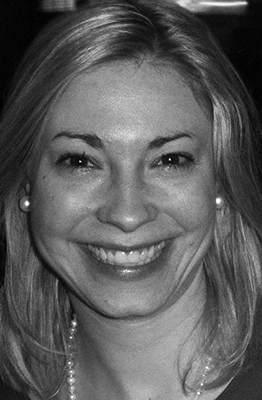Speech-language pathologists (SLPs) are commonly involved in the rehabilitation of patients presenting with cardiopulmonary disorders. Hospitalized patients diagnosed with respiratory diseases, Chronic Obstructive Pulmonary Disease (COPD), Chronic Heart Failure (CHF), and those with xerostomia are indicated as risk groups for development of oropharyngeal dysphagia. Additionally, patients who experience prolonged endotracheal intubation have been associated with the development of dysphagia (Malandraki et al., 2016).
Postextubation dysphagia has a known association with increased risk of reintubation, development of pneumonia, reduced dietary intake, placement of feeding tubes, discharge to a nursing home, and death. Although dysphagia may only persist during hospitalization and resolve by the time of discharge for many patients, it is not uncommon for postextubation dysphagia to persist at the time of discharge in patients experiencing a critical illness (Macht et al., 2011). Initial literature reviews are identifying that those diagnosed with COVID-19 may also experience complications of dysphagia due to prolonged intubation, acute respiratory distress, sepsis, muscle wasting, and altered status
of consciousness (Vergara et al., 2020).
According to Martin-Harris and colleagues (2015), in patients with disrupted cardiopulmonary and/or airway function, dysphagia is characterized by:
• discoordination of the respiration-swallow cycle
• presence of oral stasis
• decreased movement of the larynx and vocal cords/decreased airway protection
• abnormal swallowing sensation and timing
These deficits have been linked to increased episodes of penetration and aspiration, development of pneumonia, malnutrition, and dehydration (Macht et al., 2011). In order to identify the presence of dysphagia, it is imperative for the SLP to first conduct a thorough Clinical Swallow Evaluation (CSE) and then as indicated, obtain an instrumental swallow study (VFSS or FEES) for a comprehensive assessment of the pathophysiology of the swallow and to determine benefit of interventions.
Various treatment protocols, techniques, and modalities have shown positive outcomes in rehabilitation of dysphagia characteristics listed above, and may be employed during treatment with these patients. This will likely include exhalation/inhalation involved in swallow-respiration cycle; normalizing swallow timing and duration; performance of tongue movement to decrease oral stasis; and execution of Effortful Swallow and Mendelsohn Maneuver for improvement in laryngeal movement and airway protection. Specific protocols and modalities could include:
• Respiratory-Swallow Training (RST) (Martin-Harris et al., 2015)
• Respiratory Muscle Strength Training (RMST) (Troche, 2015)
• Biofeedback technology including surface electromyography (sEMG) (Authokorala et al., 2014)
Indeed, it appears the SLP may play a critical role in the recovery process for those patients diagnosed with cardiopulmonary and airway disorders. Adequate knowledge of the disorder, proper diagnostics, and treatment protocols for specific physiological impairments present, is key in helping restore the patient’s swallow function, nutrition, hydration, and overall pulmonary health.
References:
Athukorala, R., Jones, R., Sella, O., & Huckabee, M. (2014). Skill training for swallowing rehabilitation in patients with Parkinson’s disease.
Archives of Physical Medicine Rehabilitation, 95(7), 1374-82. http://doi.org/10.1016/j.apmr.2014.03.001
Malandraki, G. A., Vasiliki, M., Georgopoulos, V. C., Psychogios, L., & Nanas, S. (2016). Postextubation Dysphagia in Critical Patients:
A First Report From the Largest Step-Down Intensive Care Unit in Greece. American Journal of Speech-Language Pathology.
https://doi.org/10.1044/2015_AJSLP-14-0069
Martin-Harris, B., McFarland, D., Hill, E. G., Strange, C. B., Focht, K. L., Wan, Z., Blair, J., & McGrattan, K. (2015). Respiratory-swallow training in patients with head and neck cancer. Archives of Physical Medicine and Rehabilitation. http://doi.org/10.1016/j.apmr.2014.11.022
Macht, M., Wimbish, T., Clark, B. J., Benson, A. B., Burnham, E. L., Williams, A., & Moss, M. (2011). Postextubation dysphagia is persistent and associated with poor outcomes in survivors of critical illness. Critical Care. 15(5):R231. http://doi.org/10.1186/cc104722
Troche, M. S. (2015). Respiratory Muscle Strength Training for the Management of Airway Protective Deficits. Perspectives on Swallowing and Swallowing Disorders. Dysphagia. https://doi.org/10.1044/sasd24.2.58
Vergara, J., Skoretz, S. A., Brodsky, M. A., Miles, A., Langmore, S. E., Wallace, S., Seedat, J., Starmer, H. M., Bolton, L., Clavé, P., Vaz Freitas, S., Bogaardt, H., Matsuo, K., Madeira de Souza, C., & Mourão, L. F. (2020). Assessment, Diagnosis, and Treatment of Dysphagia in Patients Infected With SARS-CoV-2: A Review of the Literature and International Guidelines. American Journal of Speech-Language Pathology.
https://doi.org/10.1044/2020_AJSLP-20-00163

